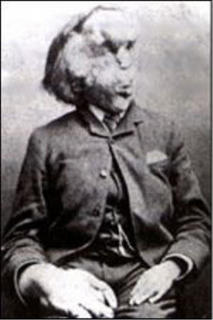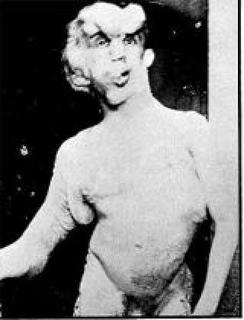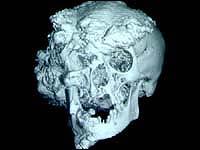The heart has its reason of which reason knows nothing...

About Me

- JennyTay
- about me...im just a simple girl who live in a simple life...nothing much interesting bout me.I'm just like everyone else u see on the street.I love to write...yea but only the thing that i wanted to write..not the thing that i'm force to write.Imagine stuffs that are not really going to happen..maybe at least not now i guess..like when will the aliens from outer space will visit us on Earth?Do we really need to live on Mars sooner or later?Or..'Human Mermaids' really exist?Yikes...!
Quote of the Day
Leave your messages here
Facebook Badge
Feedjit
Blog Archive
-
▼
2005
(95)
-
▼
October
(15)
- Sweet Memories Shall Be Kept
- Let me rest in pieces
- We are friends
- The Girl
- So not satisfied
- Face Analyzer 2
- Face analyzer
- The Elephant Man
- What crap is this?Just ignore em'..
- Aarrrghh..<--is this a nice title?Duh..
- Wake me up when October ends
- Messing up the words
- On a short car ride
- Counting the days
- The Before and After Friendster
-
▼
October
(15)
Links
Friday, October 14, 2005

In 1980, David Lynch's masterpiece The Elephant Man was released. The film told the story of
John Merrick, a tragically deformed yet charming and intelligent Englishman. When it hit the screens in the 80s, it became a cult hit with sufferers of neurofibromatosis, the disease that the Elephant Man was thought to have had. Previously, it was though that he suffered from elephantiasis, a tropical disease causes by parasites in the bloodstream. However, it was suggested in 1979 that Merrick had Proteus syndrome or "Elephant Man's Disease", which causes abnormal, unchecked growth of bones, skin, and other systems. Fewer than 100 cases of Proteus have been recorded, while NF occurs in one in every 4,000 births. No condition has ever produced a degree of deformity equivalent to Merrick's. The Elephant Man was, in fact, named Joseph Carey Merrick. He is often called John because in the memoirs of Dr. Frederick Treves, Merrick's doctor, the name was deliberately changed to John. No one is sure why; it is suggested that Treves was merely senile.
Joseph Carey Merrick was born in Leicester, England in 1862. He began growing disfiguring tumors before the age of two and his condition rapidly worsened, rendering one of his arms completely useless. Nevertheless, he was described as a wonderfully imaginative and intelligent boy. When Joseph was 11, his mother, Mary Jane, who was also physically handicapped, died, and Joseph's father remarried. Joseph's stepmother was not nearly as compassionate as his mother, and she even gave Joseph's father an ultimatum: "Joseph, or me." The young Joseph was cast out of the home and went to live at the Leicester Union Workhouse, and sold shoe polish on the street. However, he was constantly taunted by crowds of cruel children and soon moved on to another line of work. Joseph became a sideshow freak: The Elephant Man, so-called for the roughness of his skin and a facial deformity that was said to resemble a trunk. Merrick's caretaker was Tom Norman, who was a far cry from the monster portrayed in the movie. Norman cared genuinely for Merrick, who was quite a success as a freak. Merrick accumulated 200 pounds, a large sum of money at the time. Sadly, he was robbed by an Austrian showman who was not connected with Norman, and left stranded in Belgium.
Returning home from Belgium, Merrick was discovered in the Liverpool train station by Dr. Frederick Treves, who had previously seen Merrick on display in a medical school. Merrick was suffering from bronchitis and malnutrition, and Treves brought him back to the Whitechapel Hospital. The hospital became Merrick's permanent home; in his room he wrote poetry and prose and built models from card stock, his most famous being of the St. Philip's cathedral. While the film suggests he built the model from the view from his window, it is likely he studied architectural drawings of the church.
Merrick died in his sleep in 1890. Nearly all of his body was preserved, though most of the specimens have been lost. His skeleton is still in a museum in Britain (it is not, nor ever was, owned by Michael Jackson). 

A drawing of "The Elephant Man"

The skull
Heard about this Elephant Man in school just now...Mrs Tan Lay Heong,my Moral teacher was talking about this show she watched on TV quite long ago and it suddenly struck into my head "I've seen this movie before too" but can't really remember or be sure whether it was the related movie or not.
"'Tis true my form is something odd,
but blaming me is blaming god.
Could I create myself anew,
I would not fail in pleasing you.
Was I so tall,
could reach the pole,
or grasp the ocean with a span;I would be measured by the soul.
The mind's the standard of the man."
- a poem often quoted by Joseph Carey Merrick

What's the time?
Click My Nuff!
My Blog List
-
-
-
-
-
-
Sapa: Fansipan cable car7 years ago
-
时间,改变了一切8 years ago
-
Emoetry - Break8 years ago
-
-
11 Years8 years ago
-
half year mark10 years ago
-
CLICK AND VIEW11 years ago
-
-
Volks Burger @ Ampang, Kuala Lumpur11 years ago
-
Summer11 years ago
-
http://chenghuiloh.blogspot.com/12 years ago
-
-
Flirting. Is Just Human Nature13 years ago
-
bulan tujuh yang tak akan sampai.13 years ago
-
For whom the bell tolls14 years ago
-
Fun-time with Pudding Camera14 years ago
-
keeping it simple14 years ago
-
-
the end of one, the beginning of another15 years ago
-
Hi guys :]16 years ago
-
-
-
-
-
-
-
-
-
-
-
Followers
You're Number..
Copyright © 2009 Complicated Girl. All Rights Reserved.




0 Thoughtful Crap(s):
Post a Comment